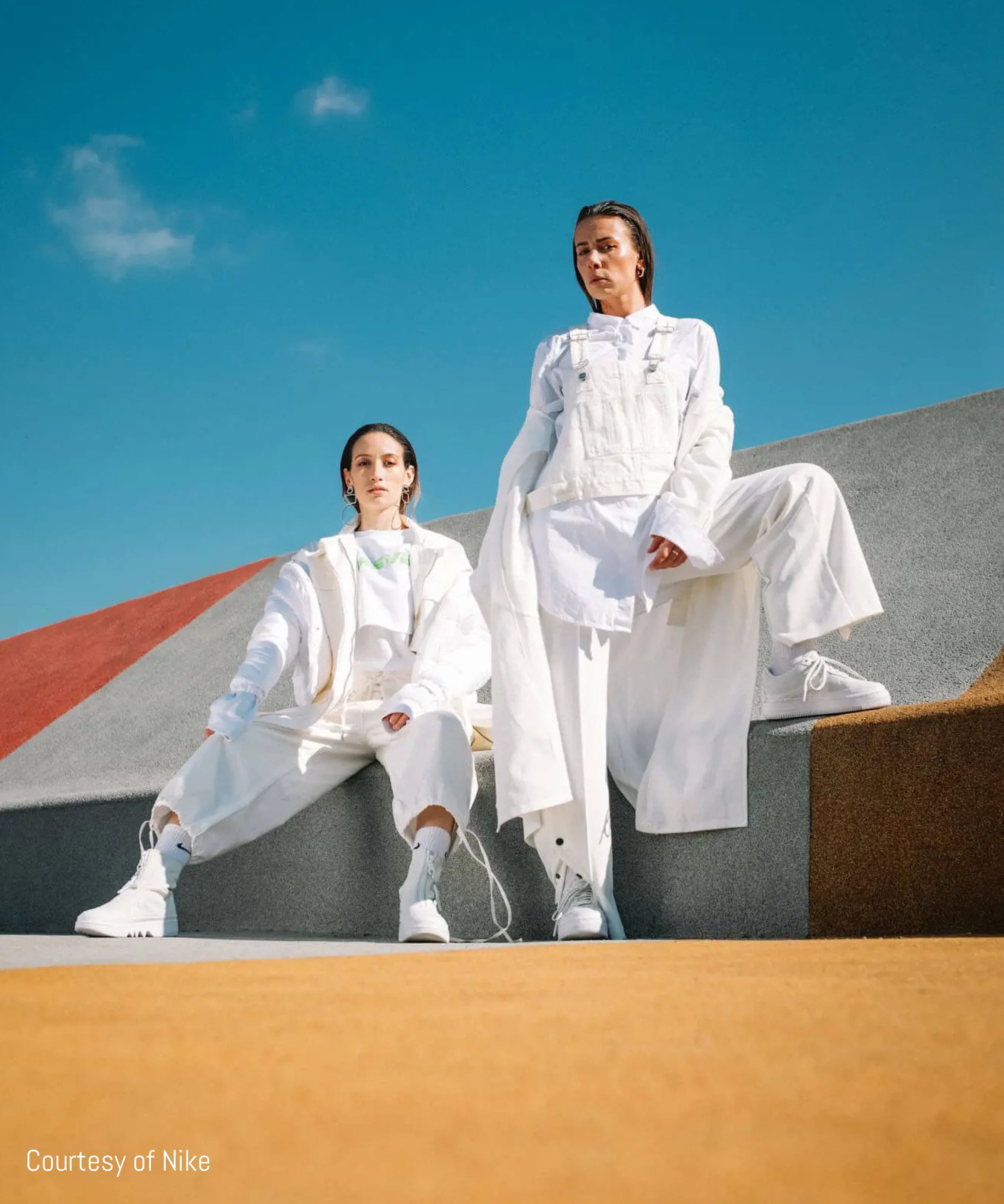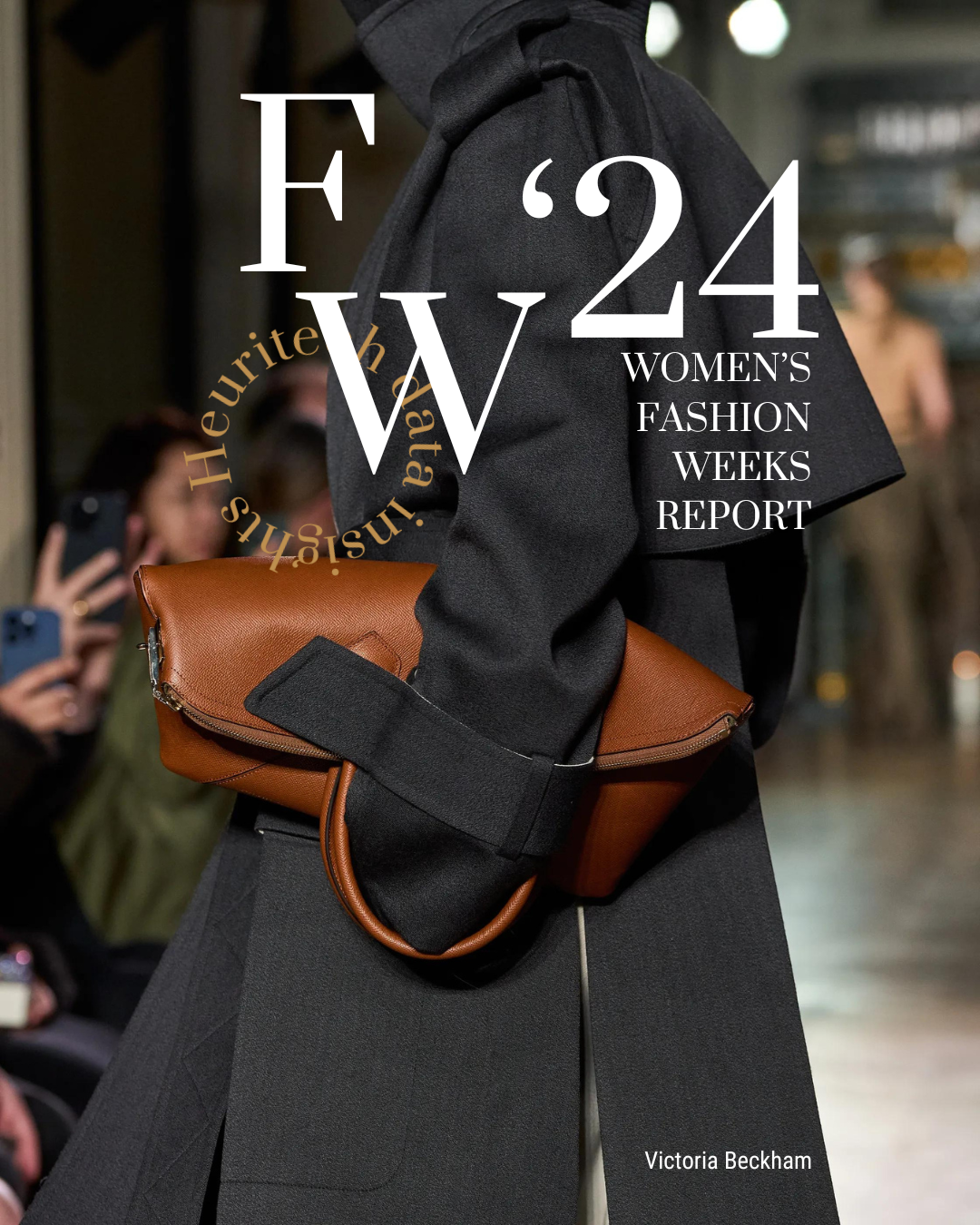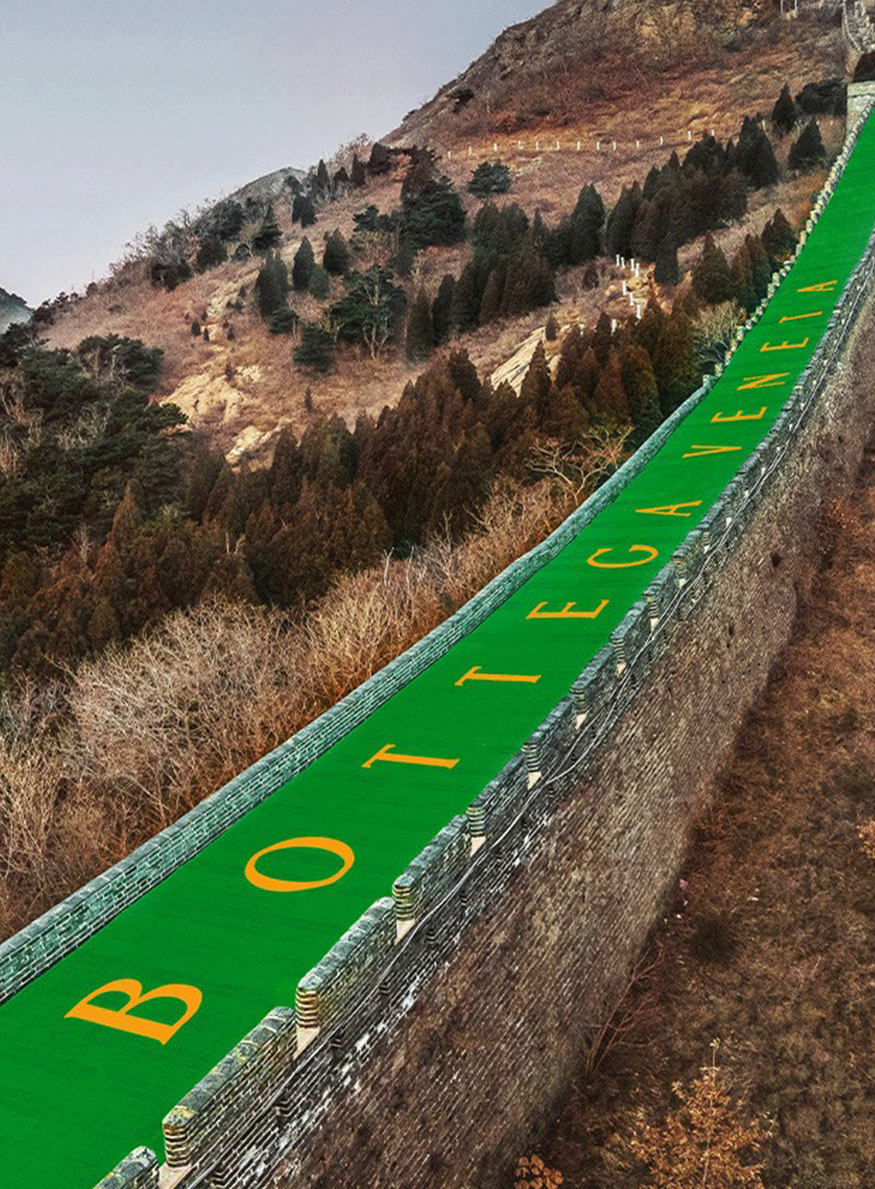Data analytics is a quintessential facet of the collection planning process for brands and retailers. Fashion players are increasingly seeking out data analytics and acknowledging the benefits it can bring to inventory management, profitability, consumer targeting, and more — but not all data analytics are equal.
What are data analytics?
There are three chief types of data analytics often found in the fashion industry, guiding brands in their decision-making.
- Descriptive analytics: Involves summarizing data to explain what has already happened. This can be anything from past sales data, stock, or consumer habits.
- Predictive analytics: Predicts what is likely (or not) to happen in the future. This method uses historical data to identify future patterns using statistics and algorithms, from predicting consumer behavior to demand.
- Prescriptive analytics: Advises on possible future outcomes. In other words, this approach attempts to guide decisions on the future.
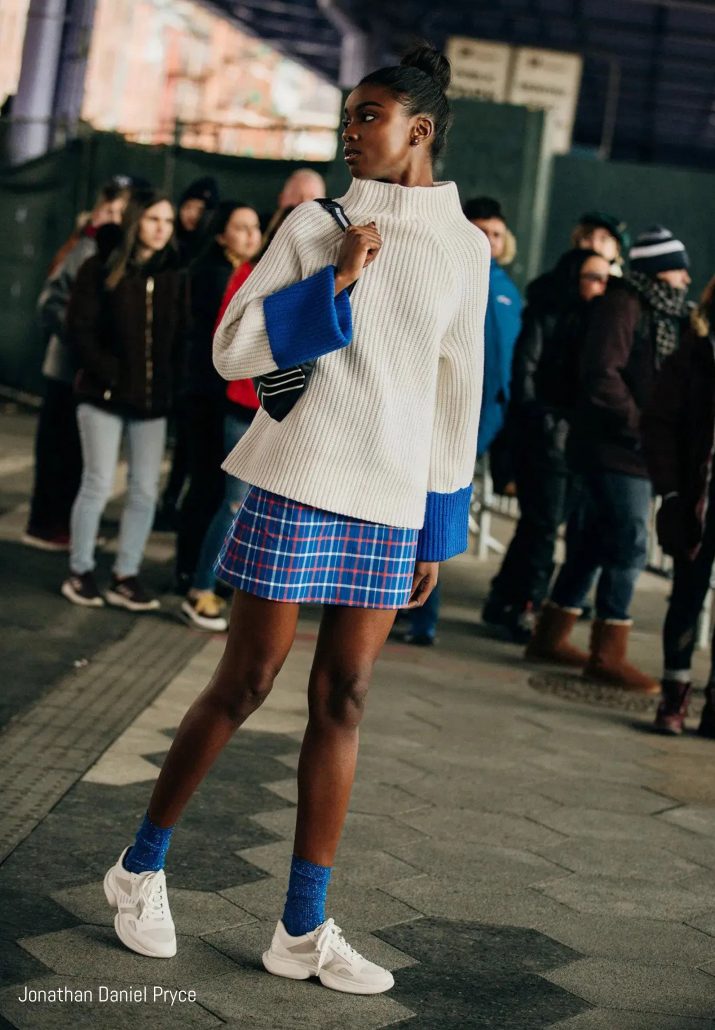
As our relationship with data changes and we discover new, innovative technologies, data analytics is progressing rapidly. The pandemic particularly gave rise to the importance of data analytics for the fashion industry, because it suddenly became more crucial than ever before to adapt to the present and plan for the future, notably in the case of planning future collections. Overnight, fashion brands and retailers were faced with understock and overstock, product assortments that had become no longer desirable, and marketing campaigns and brand identities that were no longer cohesive with shifting consumer values. So what part can data analytics play for brands and retailers?
The optimal data analytics for collection planning
In the past, teams involved in collection planning have relied largely on descriptive analytics to inform their decisions. Sales data on a certain pair of sneakers from last Winter, for instance, would often inform the product design, assortment quantity, and marketing decisions for the same or similar pair of sneakers in the next Winter collection.
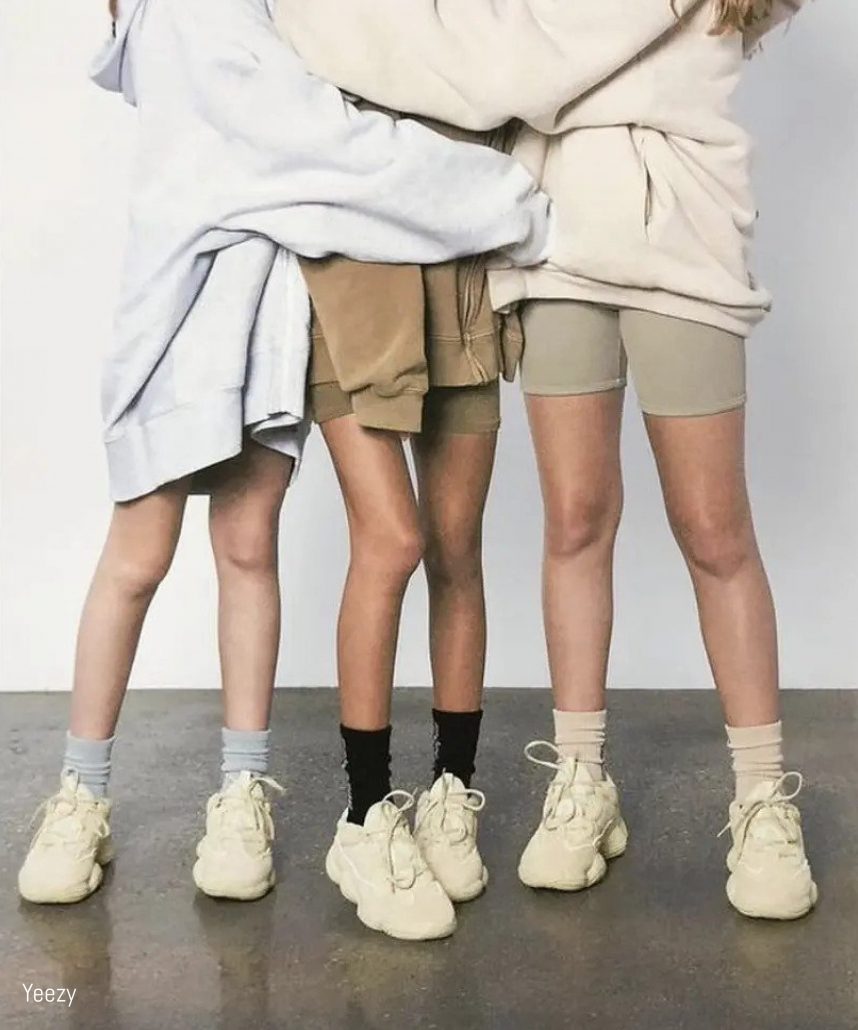
But today, predictive analytics is the most efficient way to select which trends to include or exclude in future collections, in which assortment, and for which consumer segments. AI-based trend forecasting is one form of predictive analytics which provides future trend behavior, from geography to market potential. Let’s have a look at one product in particular to better understand the applications and benefits of this form of predictive analytics.
A closer look at sneakers through the lens of data analytics
Sneakers are one of those products that are always trending — but everything from the shape, to the color, to the texture, seems to change year in, year out. Luxury, sportswear, and footwear brands certainly never rest on their laurels when it comes to creating the next pair of sneakers, because this product requires attention to the market and evolving consumer desires. For this reason, AI-based trend forecasting is particularly useful for sneakers.
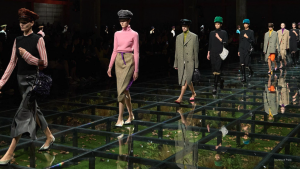
Predictive data analytics can be helpful for different teams within a fashion brand:
- Designers: Back their intuitions with data so they can create desirable products
- Merchandisers: Have a quantitative guide when planning assortment categories and quantities
- Marketers: Know which consumer segments to target and during which seasons to communicate certain trends
- United: Align teams through the same language of data
But how? With image recognition technology. It is an area of artificial intelligence that focuses on recognizing specific items — such as clothes or shoes — in pictures. Evidently, this technology can recognize fashion trends on social media images by product type and features, including colors, patterns, textures, and shapes. With the help of algorithms, the relevance of a trend is defined through 4 sets of criteria:
- Past behavior
- Magnitude
- Forecasted upcoming growth
- Adoption rate
Designing a product aligned with brand identity and customer expectations
So in order to understand which shoe models to focus on for upcoming collections, our client asked us to compare two sneaker models through an overview of the sneaker market’s future best sellers. Thanks to data analytics, they know to choose or avoid certain styles that are losing or gaining desirability to meet customer demand and increase sales.
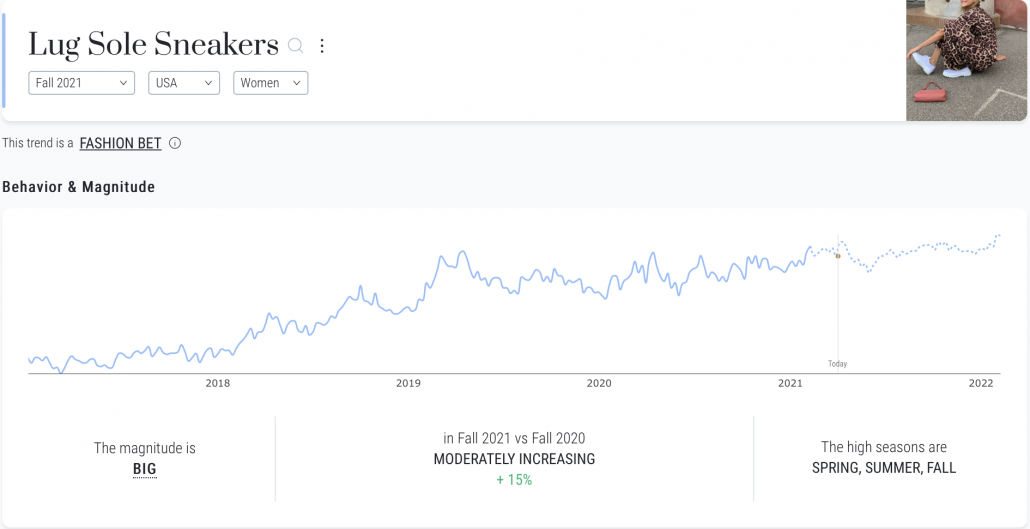
The two sneakers styles which our client was interested in were lug sole sneakers and slip-on sneakers (otherwise called no closure sneakers in our platform). Both styles were a good fit for our client’s brand DNA and product positioning, yet the two styles were at different adoption stages with different consumer segmentations. Below is a sneak peek of our platform to demonstrate what our client sees when diving into trend insights.
Data analytics finds the match between brand’s DNA and product positioning
First, it is important to identify the trend’s behavior. Is it fast-growing, rapidly declining, stagnating, seasonal? Does the company have time to release its product before the adoption rate declines? When the right sneaker model is selected and launched at the right time, commercial success is within its grasp and brand positioning is reinforced.
- The lug sole sneaker is predicted to increase by +15% during Fall 2021 in the US
- The slip-on sneaker is predicted to decrease by 2% during the same period compared to the year before
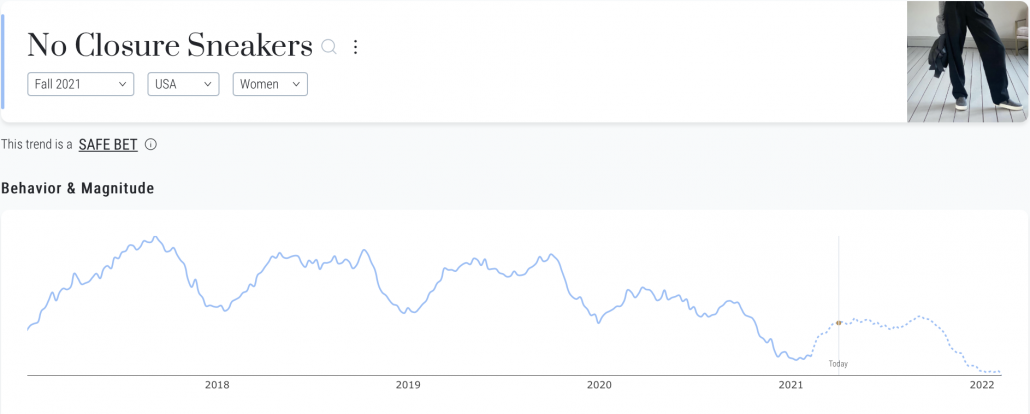
What these numbers mean is that compared to the same season the year prior, a trend undergoes an evolution in visibility of the given percentage during the season of interest. A trend’s potential market demand — in other words, its magnitude — must be taken into account, too, because this helps determine assortment quantity as to avoid under or overstock. Additionally, the high season is worth noting because it indicates the optimal launch time for a certain trend. In this case, our client knows to launch lug sole sneakers in the Fall, specifically in September.

Finally, before launching their marketing campaign, our client checked that the style was aligned with their customer target, for instance:
- Edgy: People with bold and distinctive style
- Trendy: Fashionable people looking for the latest styles
- Mainstream: People looking for safe clothing choices
Our client’s target was trendy consumers. As it turns out, our data determined that the lug sole sneaker appeals most to trendy consumers, while slip-on sneakers had a more mainstream appeal.
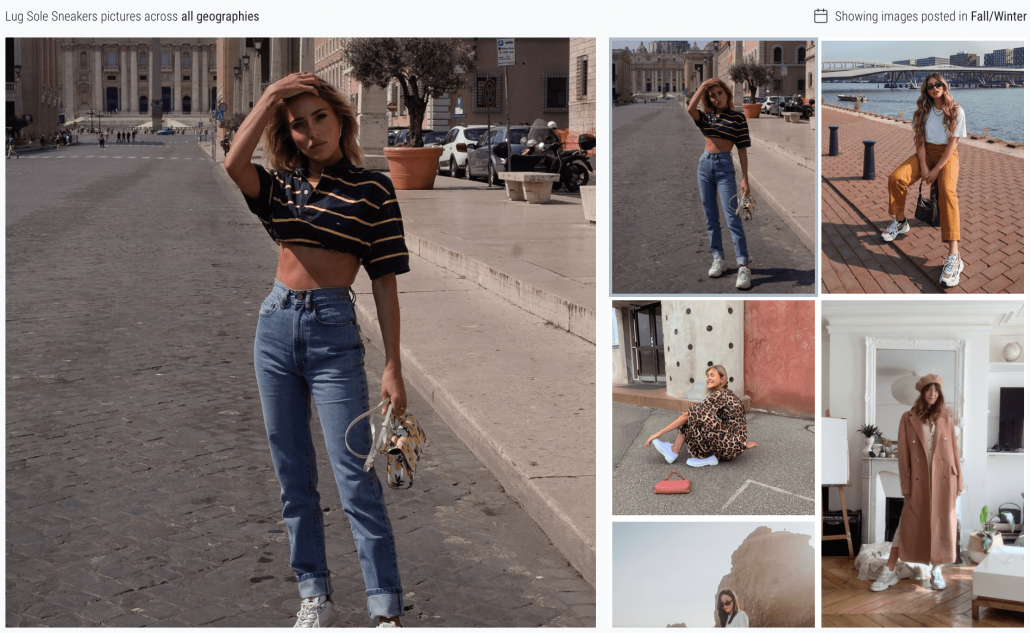
The top sneaker: Predictive data analytics changing the fashion game
In the end, our client determined that the lug sole sneaker was a better bet for their upcoming collection, as it had an ideal growth rate and consumer segmentation for their brand. In order to launch a sneaker which will most appeal to consumers, fashion brands require:
1. An overview of the shoe market
2. Identification of different sneaker styles among top market trends
3. Sneakers trend that:
- Are a good match for their brand DNA and product positioning
- Are rising
- Are adopted by their target audience
AI-based trend forecasting is the predictive analytics method giving brands and retailers a vision of their present and future market and customers.
